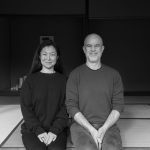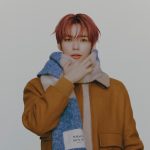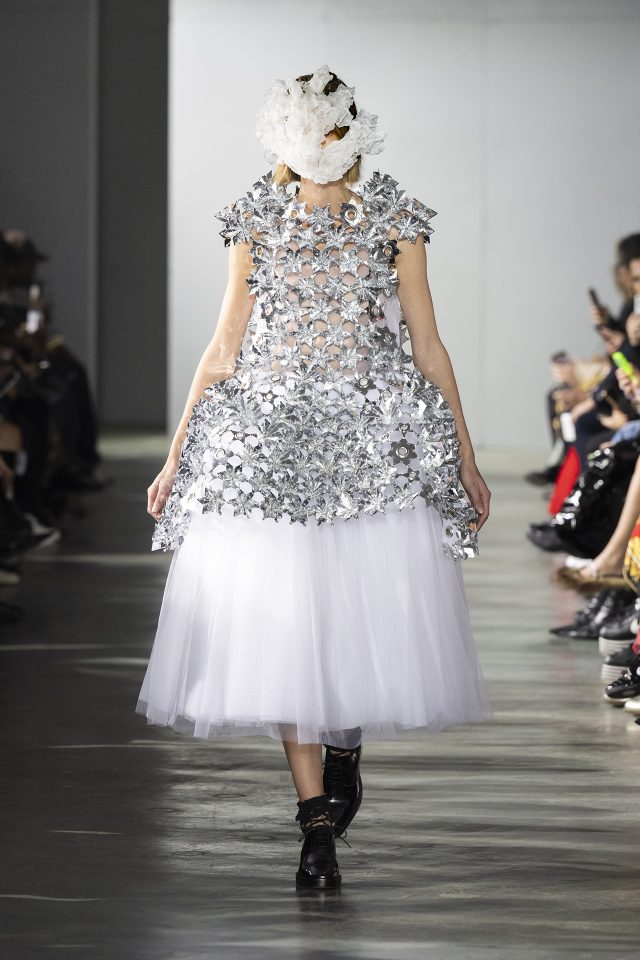『Hypebeast (ハイプビースト) 』編集長、Kevin Ma (ケヴィン・マ) インタビュー
Kevin Ma
『Hypebeast (ハイプビースト) 』創設者であり編集長のKevin Ma (ケヴィン・マ) のロングインタビュー。
『Hypebeast (ハイプビースト) 』編集長、Kevin Ma (ケヴィン・マ) インタビュー
Magazine
*You’ll find the English text after the Japanese.
現在、世界的に最も影響力のあるオンラインファッションマガジンのひとつ『Hypebeast (ハイプビースト) 』。ファッションやカルチャーに興味を持つ人ならもはや説明は必要ないだろう。世界中から月間2000万アクセスを集める同サイトは、2012年6月には、初となる紙媒体『Hypebeast Magazine (ハイプビースト・マガジン)』を創刊し、表紙には Kris Van Assche (クリス ヴァン アッシュ) も登場するなど、さらなる注目を集めている。その『Hypebeast』の社長であり編集長の Kevin Ma (ケヴィン・マ) 氏にインタビューを敢行した。
『Hypebeast』の誕生エピソード
—『Hypebeast』をはじめた経緯を教えていただけますか?
いまから8年前に、『Hypebeast』をはじめました。当時の僕はスニーカーのコレクターで、はじめはスニーカーのウェブサイトとしてスタートしたんです。 そのころはスニーカーがとにかく人気があったんです。インターネットでいろいろなウェブサイトのスニーカー情報を探していたんですが、特定のサイトを知らなければ、そういう情報を集めるのがすごく大変だったんです。そこでそういう別々のウェブサイトの情報を集約させて、ひとつの場所に集めたらいいんじゃないか!そんなジャーナルのようなブログがあれば、どうなっているか追いかけられて、そうすれば、他の人たちにも、最新のプロダクトやトレンドを簡単に見せられるんじゃないかなって思いました。こんな感じで『Hypebeast』ははじまったんです。
—編集長が、スニーカーフリークだったということですか?いまでも家中スニーカーだらけですか?
はははは。そうですね。僕は、香港に住んでいるので、家はとても小さいです (笑) ですので、いまスニーカーのコレクションはオフィスで保管しています。ウェアハウスのようなスペースを設けていて、いまはそこに全部置いています。
—『Hypebeast』はいま最も人気のあるメンズのウェブマガジンのひとつだと思いますが、どういう道のりだったんでしょうか?
僕たちはちょうど8年前(2005年)、すごくタイミングの良いときにじめられました。そのころはすでにたくさんのウェブサイトがあったのですが、あまり頻繁にはアップデートされておらず、1週間に1回とか、2週間に1回という程度で、そこまでアップデートされていなかったんです。
当時ちょうどブログが人気になってきていたころで、ニュースブログや、ガジェットブログなど、本当にたくさんのブログが立ちあがってきていました。僕はファッションとスニーカーがすごく好きだったので、そのファッションとスニーカーをひとつのブログに集めると決めて、読者が毎日のペースでニュースをチェックできるようにしようと思いました。おそらくこの辺りが人気がでた理由かも知れません。それ以外に、アメリカのヒップホップのアーティストたちのサポートももうひとつの理由だと思います。彼らは、ぼくたちのサイトを訪れてニュースなどをチェックをして、それを友達に話したり、彼らのツイッターでも『ハイプビーストでこの記事を見たよ!』とつぶやいてくれたり、彼らのサポートが、成長スピードを加速させたのは間違いないですね。
2000万PVを誇る『Hypebeast』の運営システムとは?
—アメリカと香港にオフィスがあると聞いています。その24時間体制のワーキングシステムについて教えてください。
LAには特にオフィスは置いていないんです。メインのオフィスは香港にあり、昼の間はぼくたちがここで仕事をしています。しかし、サイト自体は24時間運営されているので、LAには、エディーターとコントリビューターがいます。オフィスはないので、みんな自宅や、カフェバー、カフェで働いて、サイトのアップデートをぼくたちが寝ている間にサポートしてくれているんです。
いまよりもっとエディターの数が少なかったときは本当にクレージーでしたね。現在は約30人がこの会社にいるので、はるかに楽です。でも、最初はじめたときは、とにかく24時間で少しでも多くの記事をアップしたかったので、基本的にはほとんど寝ていなかったですね。朝は12時頃に起きて、仕事、仕事、仕事、仕事で朝の6時か7時くらいまで働いて、少し寝てという生活でした。でも、いまは少しよくなりました。
—『Hypebeast』を運営するうえで、マネジメントポリシーはありますか?
さっき話した24時間体制というのがひとつかもしれないです。サイトの立ちあげ当初はいまから比べるとファッションやスニーカーについていまのようには詳しくはなかったんですが、日々のリサーチや、毎日インターネットをチェックしながら、ファッションやカルチャーについて多くを学びました。
ですので、ぼくたちが新しいスタッフを雇う際には、いろんなジャンルのたくさんの知識がある人を雇うかというと、そうではありません。そういった人ではなく、もっとカルチャーや、ファッションに対する情熱の強い人、必ずしもたくさんのコトを知っていなくても、ぼくたちからトレーニングを受ける過程で、ファッションやカルチャーとはなんであるかについてを、自分で見つけていって欲しいと思っています。つまり、ぼくがたどった道を新しいエディターたちにも同じプロセスを進んでもらいます。たぶんこれもぼくたちのマネジメントポリシーかな。あとは、遅刻?仕事に遅れないようにとか?(笑)
—ウェブメディアを運営するうえで、重要なコトはなんだと思いますか?
ウェブ・メディアや、インターネット・メディアにとってとても重要なのはインターネットに対する知識を持っていることだと思います。なぜなら、ファッション関係の人たちは、どのようにそうなっているのかインターネットの裏面の仕組みを正しく理解していないことが多いからです。ですので、彼らがなにかをしようと思ったときに、インターネットをうまく使いこなせないことがあります。雑誌やイベントなどではすごくかっこよく見せられるのに、インターネット上ではうまくやれないんです。多分、少しのプログラミングの知識であった方が、よりウェブサイトを成功させられると思います。決して、ぼくたちのウェブサイトが成功しているという話ではなくて、ただ、インターネット上で仕事をするなら、ある程度のインターネットの関する知識がないと、とても大変だということです。だれか知っている人に確認しなければならないですし、その聞いた人が必ずしも最適なアドバイスをくれるというわけでもありません。
ぼく自身は、とても若いころからコンピューターに精通していました。人生ではじめてコンピューターを手にしたのが確か12歳くらいのときだったと思います。僕の両親がとても厚くサポートしてくれて、コンピューターを買ってくれました。『やったぁ!かっこいい!』という感じで、特にプログラマーなどになりたいわけではありませんでしたが、コンピューター、インターネットには精通していました。そしてそこから長い間、特にプロブラミングを学んだり、コンピューターについて勉強をするということもありませんでしたが、常にインターネットでなにが起こっているかという基礎的な知識はつけています。ですので、『Hypebeast』をはじめたときは、それらのスキルをウェブサイトをつくるコトにいかせるちょうど良いタイミングだったのかも知れません。そして常になにが新しいのかを発見したり学んだりしなければいけません。例えば、いまで言うと、ソーシャルメディアでしょう。つまり、新しいモノや、クリエイティブなプラットフォームをどんどん受け入れなければなりません。そして、それらをすばやく受け入れなければ、取り残されてしまうでしょう。ですので、ぼくたちは常に自分たちのマインドをオープンにすることを心がけています。
雑誌『Hypebeast Magazine』を立ち上げた理由
—最近、紙媒体『Hypebeast Magazine』を創刊しましたが、なぜ紙媒体を立ちあげたのですか?
ぼくたちは、ずっと紙媒体の雑誌が好きでした。そもそも『Hypebeast』をウェブではじめたのも、雑誌をチェックしていたからなんです。『わぁ、最高の情報だ』という感じで。日本の雑誌においてもそうです。ですので、『わぁ、かっこいい!けど、これらの情報ってインターネットでは得られないよね』、という状態でしたので、雑誌をインターネットに持ってきたような感じです。でも本来はプリントされた雑誌が好きという所からはじまっていたので、自分で雑誌をやりたいなという気持ちはいつもありました。しかし、そもそも雑誌をつくったこともなく、どうやっていいかもわかりませんでしたし、かけるコストや労力もインターネットよりも少し高かったのでやりませんでした。基本的には、インターネットだと無料です。だれでもウェブサイトをはじめられます。しかし、雑誌をつくるとなると、印刷代、輸送コスト、そして、どこに卸してもらうかなども考えなければなりません。ですので、これらのハードルがあることを考えると、これまではまったく本気で雑誌をリリースするということは考えませんでしたね。でも今年になってチームのメンバーも増えて、ついに、ずっと昔からやりたかった「紙媒体で雑誌を出版させる」ということを実現できました。
—オンラインストアも最近はじめられましたよね?これについてはどのような背景がありましたか?
オンラインストは、基本的には、『Hypebeast』のエクステンションです。はじめの7年間は、まったくオンラインストアをやりたいという気持ちはありませんでした。なぜなら、エディトリアルはエディトリアルという立場であり続けるべきだと考えていたからです。ECが一緒にあるべきではないと考えていました。もしも、エディトリアルもやりながら、ECで販売もやっていたら、なんかおかしいのではないか、そう思って過去何年間も、ECにはまったくタッチしたくないと思っていました。しかし、本当に今年くらいになって、例えば『Mr.Porter (ミスターポーター) 』のようなサイトがECとエディトリアルを一緒にやっていたり、他にもいろんなサイトがECとエディトリアルの融合をやっているのを見て、自分たちもやった方ががいいのかなと思いはじめました。そして、ちょうど今年のはじめに、読者たちに「みんなの経験から、いま『Hypebeast』になにが欲しい?」と問いかけたところ、本当にたくさんの読者たちが、「ECが欲しい」と。読者たちは、常にかっこいいアイテムを見ながら、結局いつも買えないという状態でした。「それならば、とりあえずやってみよう!』ということで、5月にECをローンチしまして、現状はかなり調子いいです。
—インターネットとファッションの将来についてはどう考えていますか?
いまはなんとも言いづらいですね。すでにかなりのものが出そろっていて、『Facebook (フェイスブック) 』もあれば、『Twitter (ツイッター) 』なんかもあるし、それらが生活の一部になっているので。もしわかったら億万長者になれるんじゃないですか (笑)
インターネットの将来に関してはわかりませんが、ファションに関して言えば、どんどんECに近づいていくのではないかなと思います。みんな実際にモノを見て、ECで買う。オンラインショッピングもどんどんソーシャルになっていくんだと思います。
例えば、『POLYVORE (ポリボア) 』 という女の子向けのサイトがあって、女の子たちはいろんな服を使って遊んでいます。僕自身は使ってないですが、本当にどんどん大きくなってきています。ファッションの将来という意味では、こんな感じでさらにソーシャルに、よりファッションにおける体験の共有という形になっていくのだと思いますね。
—いろいろなものがスマートフォンに移行していることについてはどう思いますか?
そうだね。もちろんアプリ関係もどんどん進化していくと思う。アプリの数が増えて、スマートフォンを使ってショッピングをすることがさらに簡単になっていく。みんなの携帯電話がすべてを支配するようになると思います。より多くの人が使うようになっていくんだと思います。
—つねにチェックしているお気に入りのウェブサイトをいくつかあげてもらえますか?
僕は情報をまとめるために、いまは毎日100個くらいのサイトをチェックしています。
『honeyee.com (ハニカム) 』
彼らのサイトは本当にいいサイトです。つねに安定的にいい仕事をしていると思います。彼らのニュースはとてもとてもいいです。これは毎日チェックしているサイトのひとつですね。
『THE FASHION POST (ザ・ファッションポスト) 』
とても興味深いと思っています。英語版があるので、日本と海外のギャップの橋渡しをしているというか。私はつねに日本のウェブサイトをチェックしていますが、読んで理解することはできません。だから日本でなにが起こっているのかは理解できていませんでした。そこで『THE FASHION POST』が登場して、いまやっと東京でなにが起こっているのかがわかるようになりました。
他に、ファッション以外のサイトも含めると、『con-Quest (コン・クエスト) 』や『Techcrunch (テッククランチ) 』もよく見ます。
—なにか新しいプロジェクトを予定していますか?
とくに大きなものはないですね。ちょうど『Hypebeast Store (ハイプビースト・ストア) 』『Hypebeast Magazine (ハイプビースト・マガジン) 』などをローンチしたばかりなので、当面はこれらに集中したいと思います。『Hypebeast Store』だと、カスタマーサービスをきっちりとできるように気をつけたり、物流はしっかりしているか、配送はどうか、というような基本的なことをしっかりと固めたいです。雑誌についても、毎号より良いものにしていきたいです。きっと来年には、現状のプロジェクトの進捗が良ければ、さらになにか考えたいですね。
あと、『Hypebeast』のアプリをローンチしたいと思っています。アプリについてはちょっと出遅れているので、準備しているところです。iPhoneアプリ、 iPadアプリ、それらを使って『Hypebeast』をより簡単に見ることができるようになります。もちろん『Hypebeast Store』なんかも、ぜんぶ僕たちのアプリ内にあるので、買い物をすることもできるようになる。この辺りが短期的にクリアしたいゴールですね。
—ビジネスモデルについて聞いてもいいですか?
もちろんです。僕たちのサイトは純粋にコンテンツ系ウェブサイトとしてスタートして、いまは広告ベースで成り立っています。ですので、基本的にはバナースペースがあって、バナーをそこで宣伝したいブランドやショップに対して販売しています。読者に対してキャンペーンを行いたいお店から購入をしてもらったりもしています。最初の収益源は広告だけでしたが、いまはオンラインストアもはじめたので、プロダクト販売からくる収益も生まれました。あと、『Hypebeast Magazine』はまだそんなに収益がたっているわけでもないですが、これもまた広告ベースなので、本当にシンプルな構造です。
—お気に入りのメンズ・ファッションデザイナーはいますか?
PHENOMENON (フェノメノン) のデザイナーであるOSUMIさん。彼の作るモノが好きですね。僕は昔から日本のファッションが大好きでした。たぶん、彼の存在をはじめて知ったのは雑誌からだったと思います。いろいろな雑誌をチェックしていて「おぉ、かっこいいな」と思ったりしていました。そして『Hypebeast』を通じて話す機会があり、東京で何度か会って交流を深めています。彼の最近のデザインはすごくいいですね。僕はいまの東京の新しいシーンがすごく好きです。なぜなら日本はつねに裏原宿という感じでしたが、いまではPHENOMENON, White Mountaineering (ホワイトマウンテニアリング)、Facetasm (ファセッタズム) のような新しいブランドがどんどん出てきていて、とても興味深いです。彼らの作りだすムーブメントを見るのが好きですし、とてもかっこいいと思いますね。
—最後に、日本のメンズ・ファッションシーンになにを期待しますか?日本のブランドがさらに海外のマーケットに進出するためのアドバイスなどがあれば教えてください。
とても興味深いと思っています。日本のマーケットはもうそんなに大きくなっていかないと思いますよね?かなり安定したマーケットではあるかもしれませんが、以前のようには成長はしないかもしれません。ですので、日本の外に目を向けることはとてもいい流れだと思います。ただ円がとにかく強いので、プライスを米ドル換算したときが大きな問題です。そこはもうどうしようもないです。なので現状は価格帯が問題になるかもしれないです。もし日本のブランドがこの問題を乗り越えることができたら最高ですね。もちろんすでにUNDERCOVER (アンダーカバー) はパリでコレクションをやっていますし、N.Hoolywood (エヌ ハリウッド) もニューヨークでコレクションをやっています。現状でもたくさんのブランドが海外で挑戦していますし、海外での価格帯をもう少し落とせるといいですね。世界はつねにおもしろいデザイナーを求めていると思いますので、みんなに楽しみと、より多くの選択肢を提供して欲しいです。
<プロフィール>
Kevin Ma (ケヴィン・マ) /『HYPEBEAST.com』の設立者兼編集長。Kevinが趣味の一環としてはじめた同サイトは、予想もしなかった規模へと成長し、いまでは世界で最も有力なファッション・カルチャー系ウェブサイトのひとつとなっている。このウェブサイトをはじめる以前、Kevinはブリティッシュコロンビア大学に通う学生だった。余暇にはパソコンの前でウェブの最新テクノロジーについてリサーチを行うことが彼の習慣となっている。
‘Hypebeast.com’ is one of the most influential online fashion magazines around. If you’re into fashion and culture, there’s probably no need to even explain what it is. ‘Hypebeast.com’ gathers more than 20 million clicks every month from all over the world. This global site launched its print edition, ‘Hypebeast Magazine’, in Jun 2012 with Kris Van Assche on the cover. Lately, ‘Hypebeast’ has been attracting an increasing amount of attention. We interviewed Kevin Ma, Founder and Editor-in-Chief of Hypebeast.com.
—Could you tell us about how you started Hypebeast?
I founded ‘hypebeast.com’ eight years ago. It started out as a sneaker website. I was really into collecting sneakers; they were really popular then. I was going around different websites on the Internet, trying to find information about all these sneakers. However, information was really hard to locate unless you knew a lot about the specific websites.
So I thought, “Hey! Why not collect information from different websites and put it all together in one place? I can keep a journal or blog and use that to track what’s going on.” This allows other people to see the latest products and trends very easily. ‘Hypebeast’ started out like that.
—So you were something of a sneaker freak, right?
Yeah, I was, haha. Because there’s not much living space in Hong Kong, my house is very small. I keep all my sneakers in my office now. I have a warehouse that we keep our stuff in, so the collection’s down there.
—I think ‘Hypebeast’ is the most popular men’s web magazine around right now. How did you achieve this level of popularity?
We came in at the right time. Eight years ago, there were many websites available, but they didn’t update very frequently. They’d update their websites once a week or once every fortnight. Information was slow.
When I began, blogs were becoming popular. There were gadget blogs, news blogs; so many different types of blogs were starting up. I decided to blog about fashion and sneakers. I wanted the blog to be a site people could check on a daily basis. I guess that’s one of the reasons it became more popular.
Also, different hip-hop artists from the US helped out. They came to our website, checked out the news and told their friends about it. They’d talk about what they’d seen on Twitter too. This kind of support helped us grow.
—I heard you have offices in both America and Hong Kong. Please tell us about your 24 hour working system.
We don’t really have an office in LA. Our main office is in Hong Kong, so we all do our work during the day time. However, our site runs round the clock, so we have contributors and editors in LA. There’s no office per se; they work from home, at coffee bars and cafés, and help us update our sites while we’re sleeping. It used to be crazier when we had less editors. Right now, we have thirty-something people in this company, so it’s much easier. When we first started, I wanted to update the site as often as possible and I wasn’t sleeping much. I would wake up at 12 PM, for example, and work work work until 6 or 7 AM. I’d then sleep for a few hours. It’s a little better now though.
—Do you have any management policies for running ‘Hypebeast’?
One policy is to keep the site running 24 hours. When I first started, I didn’t know much about fashion or sneakers. I was just researching and checking out the Internet everyday. That’s how I learned about fashion and about this whole culture. We don’t have to necessarily hire people who have a lot of knowledge already. Those are not the people we’re automatically looking for. We’re looking for people who are passionate about fashion and culture, but like I said, they don’t always have to know a lot. We’d like to train them up and let them discover what fashion and culture is about themselves. That’s how I started and our new editors go through the same process. As for another policy… I guess don’t be late for work?
—What’s important when it comes to running web media?
For web media, it’s very important to actually know about the Internet. A lot of fashion people don’t always have this knowledge and their projects might not necessarily work on the Internet, even though they work well in print or as an event. You need to have some programming knowledge in order to run a successful website, or at least know some people with those skills.
I’ve been really into computers since I was a young child. I got my first computer when I was about 12; my parents were very supportive and they bought me one. I thought it was really cool. At the time, I didn’t want to be a programmer or anything. I was just really into computers and the Internet. I guess I didn’t do anything with this interest in the sense that I didn’t go into programming or study computing. But I’ve always had a basic knowledge of what’s happening.
When I started ‘Hypebeast’, that was the right time to apply those skills I’d picked up on to how to create a website. Also, when it comes to technology, you have to learn and re-discover what’s new. It’s all about social media now. You have to accept new things, the platforms that are currently the most creative. If you don’t accept them quickly enough, then you’ll be too slow and fall behind. We try to keep our minds open.
—You have just published a print magazine. What was your thinking behind this?
We’d always really loved print. I started the website because I was checking out magazines all the time, discovering all this awesome information. Japanese magazines are particularly good for this. I thought the format was great, but I could never find the information in the magazines on the Internet. That’s why I brought a magazine to the Internet.
I started out immersed in print and really enjoyed the medium. I always wanted to do a print magazine myself, but didn’t know how. I had no experience and the effort and cost is a bit higher than the Internet. The Internet is basically free and anyone can start a website. With print, you have to calculate the production and shipping costs and think about distribution. With all these barriers, we never tried making a print magazine. But this year, we have more people on our team and we can finally do what we wanted to do all that time ago.
—You’ve also started an online store. Can you tell us about this?
Our online store is basically an extension of the ‘hypebeast.com’ website. In the first seven years, we didn’t want to do a store. We thought that editorial should be editorial and shouldn’t include commerce. But this year, we saw all these other websites doing it. For example, ‘mr.porter’. They do a website which combines commerce and editorial. Many other websites are also starting to try both.
We felt like we should start trying this too. At the beginning of the year, we asked our readers how we could improve their experience. A lot of them said they wanted e-commerce. They’d been looking at all these cool products but hadn’t been able to buy them. So we decided to try it out. We launched our e-commerce site in May and it’s been pretty good so far.
—Where do you see the Internet and fashion going in the future?
It’s hard to say at this point because lots of things are pretty developed already. Facebook, Twitter, etc, have kind of taken over our lives, right? If I knew where the Internet was headed, I’d be a billionaire, haha.
I don’t know about the future of the Internet, but I think fashion will be more about commerce. People will actually see the products and then buy them. The online shopping experience will be more social.
There’s websites like ‘POLYVORE’. Polyvore is a website aimed at girls and women and you can play around with different outfits. I don’t use it myself, but I know it’s getting bigger and bigger. I think the future of fashion will be like that – much more sociable.
—What about everything going over to smart phones?
Apps will continue to develop, of course. Shopping on your phone will become even easier and phones will take over one day. Basically, there’ll be more and more apps for people to use.
—Can you give us some examples of your favorite websites, including the Japanese ones?
I have to check hundreds of websites everyday now to gather information.
‘honeyee.com’
I think ‘honeyee.com’ do a really good job. Obviously, they do well statistically and their news is also very, very good. That’s one of the sites I check every day.
‘THE FASHION POST’
I think ‘THE FASHION POST’ is interesting too. Because the site has an English version, it’s bridging the language gap. I couldn’t read anything on the Japanese websites, so I never knew what was going on in Japan. But I now know what’s happening in Tokyo as a result of THE FASHION POST.
I also love to check ‘Con-Quest’ and ‘TechCrunch’.
—Do you have any new projects coming up?
There are no major upcoming changes, I think. Because we just launched a number of things like e-commerce and a magazine, we’re trying to concentrate and build on that. With our e-commerce, we need to ensure our customer service, logistics and shipping are good. It’s basic, but we’re still building that up. And we want to make sure our magazine improves with each issue. We won’t be doing anything crazy in the next few months. Maybe next year, if our current projects are doing well.
We do want to launch a ‘Hypebeast’ app though. We’re working on an iPhone / iPad app, so our readers can view and browse ‘Hypebeast’ better. Our online store will also be compatible with our apps, so customer will be able to shop there too. These are short-term goals we want to accomplish.
—Do you mind telling us about your business model?
No problem. We started off as a purely content-based website. Most content is based on advertising and, as you can see on our website, we have banner space. We sell those banners to different brands or different stores who want to make some noise. If they want to campaign to readers, then they buy the advertising space. In the beginning, it was all advert-based.
We’ve created this store now, so our revenue is also from selling products. There’s also the magazine, but we don’t really make money from that. There is advertising in the magazine though. It’s really simple.
—Do you have any favorite men’s fashion designers?
I really like Phenomenon. I love Oosumi-san’s stuff. I’ve always been a fan of Japanese fashion and I think I knew about Oosumi-san from various magazines and thinking what I saw was cool. We eventually began talking to each other through ‘Hypebeast’ and I met him a couple of times in Tokyo. I really like his recent designs.
I really enjoy the new Tokyo because of all the Ura-Harajuku guys. There’s a bunch of new designers like Phenomenon, White Mountaineering and Facetasm. All these new designers are very interesting. I like seeing movements and this movement is very cool.
—What do you expect from the Japanese men’s fashion scene? Do you have any advice for when some Japanese brands eventually try to reach international markets?
I think the Japanese men’s fashion scene is very interesting. I assume that the Japanese market isn’t growing too much? It might be pretty stable, but perhaps its not growing like before. So obviously, reaching out of Japan is a good move as there’s a huge international market out there.
Price points, like the US price point, is probably the main concern. The yen is so high, it just doesn’t help. If brands can get over that, that’s great. Some brands like UNDERCOVER have done that and they’re present in Paris and Hollywood. They’re showing in New York now. I think a lot of brands are trying and as long as the prices can be more reasonable outside Japan, then it should be okay. The world always needs interesting designers and it’s fun for everyone to have more opinions.
<Profile>
Kevin Ma is Founder and Editor-In-Chief of ‘hypebeast.com com’. Kevin originally started the website as a hobby. However, ‘hypebeast.com’ grew from a mere few hundred page views to being one of the leading online fashion and culture magazines. Before starting ‘hypebeast.com’, Kevin was a college student attending the University of British Columbia. In his spare time, you’ll find Kevin on the computer, researching the latest web technology.











